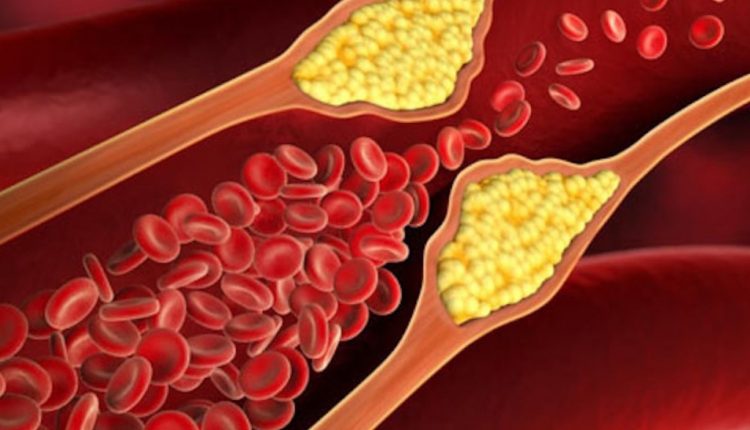
Arteriosclerosis: what is it?
Arteriosclerosis is a hardening and loss of elasticity of blood vessels and particularly arteries due to the accumulation of lipids that form hard, rigid plaques that thicken the walls of blood vessels
Arteriosclerosis is a chronic degenerative disease
It appears especially with advancing age, which causes an increase in the consistency of the vessel wall and can be caused by a variety of disease processes in addition to aging.
Several morbid forms are included under this name, which can be found associated or isolated and all of which, however, have as their ultimate effect a more or less reduction in the elasticity of the arterial wall.
Arteriosclerosis and the kidneys
Arteriolosclerosis affects only organ arterioles and is well documented especially in the kidneys, where it causes a condition known as benign nephrosclerosis.
Homogeneous thickening due to deposits of hyaline substance (Hyalinosis) with loss of cellular infrastructure is seen in the affected arterioles.
The hyperplastic form is due to proliferation of muscle cells that tighten the lumen; it too frequently affects renal arterioles and is found in cases of severe hypertension sustained by severe kidney impairment (malignant nephrosclerosis).
Atherosclerosis of the tunica media is characterized by regressive phenomena of the muscular and elastic tissues of the tunica media, which are replaced by fibro-sclerotic tissue; this results not so much in deformation of the vessel as in a marked loss of its elasticity.
Symptoms of Atherosclerosis
Atherosclerosis, in which the connection with a disorder of fat metabolism is evident, is a special form of Atherosclerosis.
The most frequent symptoms of atherosclerosis are those dependent on poor cerebral circulation:
- easy fatigability at work, both physical and mental
- memory loss
- insomnia
- character instability with phases of depression alternating with periods of extreme irritability.
In addition, disturbances in hearing (buzzing) and vision (transient blurring) are common.
Superficial arteries are often hard to the touch and appear tortuous and briskly pulsating.
Atherosclerosis and hypertension
When atherosclerosis is accompanied by hypertension, a greater or lesser degree of hypertrophy can be seen in the left ventricle of the heart, that is, an increase in volume that the heart enacts to more easily overcome the increased resistance it encounters in pumping blood into the aorta artery.
With this altered circulatory dynamics, the conditions are created for the formation of thrombi in the arterial lumen and their eventual detachment from the point where they formed and with subsequent arrest at a narrower point in the arterial trunk.
Occlusive phenomena thus occur in larger or smaller arteries of the brain, heart, intestines or extremities.
But the most obvious and most common damage of atherosclerosis is done in the cardiac and cerebral districts.
In the former, the disease affects the coronary arteries responsible for the nutrition of the heart.
Atherosclerosis and the heart, Coronary Sclerosis
Coronary sclerosis is reflected in a sclerosis of the heart tissue with consequent impairment of its functioning manifested by breathlessness, palpitation, arrhythmia, and edema in the legs; but angina pectoris and infarction (especially the latter) are still the most fearful manifestations of coronary artery impairment.
In the cerebral district, sudden occlusion phenomena can equally occur, which is expressed by the very serious picture of aplopeticus stroke (aplopexy).
Prevention of arteriosclerosis: what to do
The treatment of atherosclerosis is essentially preventive, but in the disease, in general, hygienic dietary treatment and medical treatment are implemented.
For the former, less stressful work rhythms, elimination of anything that leads to accentuating the patient’s emotional involvement, climatic imbalances and excesses of temperature, whether hot or cold, will be provided.
The patient will have to modify his or her life rhythms: get enough sleep and exercise outdoors.
In diet, hard liquor and tobacco will have to be completely limited.
All animal fats will have to be replaced with vegetable fats; the diet low in calories, because cholesterol, one of the keys (if not the only one) to the atherosclerotic mechanism, can be synthesized if the diet is high in calories even if it is free of animal fats.
Medically, there is a tendency to decrease blood lipids.
Read Also:
Emergency Live Even More…Live: Download The New Free App Of Your Newspaper For IOS And Android
Atherosclerosis: What Is It And How To Avoid It?
The Patient’s ECG: How To Read An Electrocardiogram In A Simple Way
Signs And Symptoms Of Sudden Cardiac Arrest: How To Tell If Someone Needs CPR
Inflammations Of The Heart: Myocarditis, Infective Endocarditis And Pericarditis
Quickly Finding – And Treating – The Cause Of A Stroke May Prevent More: New Guidelines
Atrial Fibrillation: Symptoms To Watch Out For
Ischaemic Heart Disease: What It Is, How To Prevent It And How To Treat It
Family Hypercholesterolemia: What It Is And How To Treat It
What Is Cholesterol And Why Is It Tested To Quantify The Level Of (Total) Cholesterol In The Blood?
Ischaemic Heart Disease: Chronic, Definition, Symptoms, Consequences
Atherosclerosis: What It Is, What Causes It And How To Treat It
What Is Atherosclerosis And How To Prevent It
Classification Of Hypertension According To Organ Damage
Defibrillator: What It Is, How It Works, Price, Voltage, Manual And External



